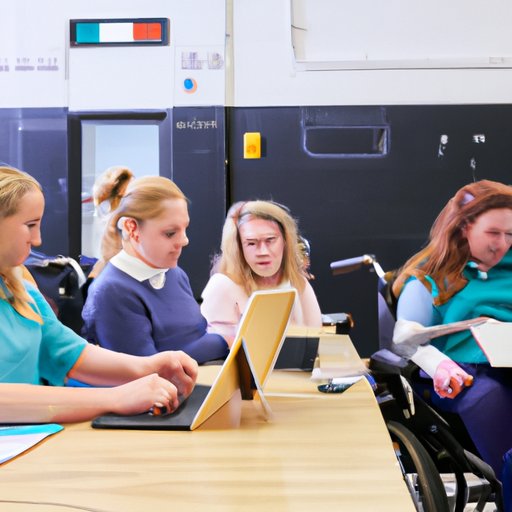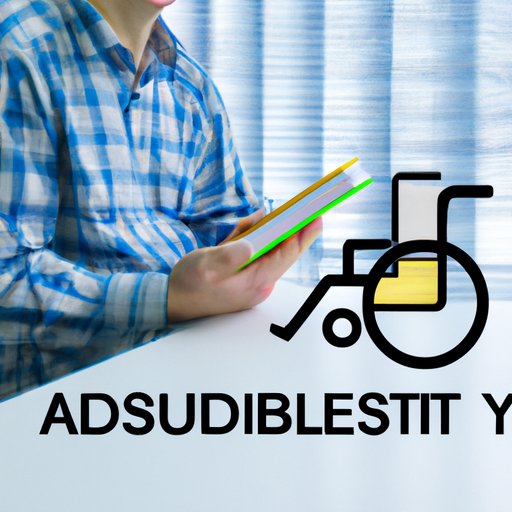Introduction
Assistive technology (AT) can have a profound impact on the lives of students with disabilities. It is any device, software, or equipment that helps to enhance a person’s capabilities and overcome challenges they may face in the classroom. AT can be used to help students with physical, cognitive, and learning disabilities, as well as those with visual, hearing, and speech impairments. The goal of AT is to enable students to participate more fully in educational activities, giving them greater independence and control over their learning environment.
There are a variety of types of AT available to support student learning. These include computer hardware and software, specialized keyboards and mice, alternative communication devices, and adapted textbooks and materials. There are also a range of apps and programs designed specifically for students with disabilities, such as text-to-speech software, voice recognition software, and screen readers. Additionally, many schools are now incorporating robotics and artificial intelligence (AI) into their classrooms, providing students with additional opportunities to explore and engage with their studies.

How Assistive Technology Can Help Students Overcome Challenges in the Classroom
Assistive technology can help students with disabilities to overcome the challenges they face in the classroom. For example, students with physical disabilities may find it difficult to write by hand, but AT can provide them with an alternative way to express themselves and complete assignments. Similarly, students with visual impairments can use special software to magnify text or read aloud digital documents. Speech-generating devices can also help students who have difficulty communicating verbally.
There are many case studies of students who have benefited from using assistive technology in the classroom. One example is a student with cerebral palsy who was able to use a computer and voice recognition software to write essays and participate in class discussions. Another example is a student with dyslexia who was able to use a text-to-speech program to read aloud from digital books. These examples demonstrate the potential of AT to help students with disabilities succeed in school.
It is important to note that there is a legal framework surrounding access to assistive technology in education. The Individuals with Disabilities Education Act (IDEA) requires schools to provide AT services to students who need them, and the Americans with Disabilities Act (ADA) prohibits discrimination against students with disabilities in educational settings. These laws provide a basis for ensuring students with disabilities have the same access to educational resources as their peers.
Exploring Role of Parents, Teachers, and Schools in Supporting Students with Assistive Technology
Parents play an important role in supporting students with assistive technology. They can help to identify which type of AT is best suited to their child’s needs, as well as provide emotional support and guidance as they learn to use the technology. It is also important for parents to stay informed about the legal framework surrounding access to AT, and advocate for their child’s right to use it in the classroom.
Teachers also have an important role to play in facilitating the use of AT in the classroom. They can provide students with resources and training to help them learn how to use the technology, as well as create an inclusive environment where all students feel comfortable using it. Additionally, teachers can collaborate with other educators and professionals to ensure students receive the support they need.
Finally, schools must ensure that students with disabilities have access to the AT they need. This includes providing adequate funding for AT, making sure the technology is up to date, and developing policies and procedures to ensure the technology is used appropriately. Schools should also ensure that staff are trained in the use of AT and that students receive the necessary support and training to use it effectively.
Future Directions for Assistive Technology in Education
As technology continues to evolve, so too does the potential of assistive technology in education. Artificial intelligence (AI) is becoming increasingly integrated into AT, allowing for more personalized and adaptive learning experiences. AI-powered tools such as chatbots and virtual assistants can provide students with real-time feedback and support, while machine learning algorithms can be used to analyze large amounts of data to identify patterns and suggest interventions.
Additionally, there are opportunities for increased integration of AT into everyday life. Smart home technologies, such as voice-activated speakers and connected appliances, can provide students with greater independence and control over their environment. Wearable devices can also be used to monitor health and wellbeing, enabling students to better manage their physical and mental health.
Conclusion
Assistive technology can be a powerful tool for students with disabilities, helping them to overcome challenges in the classroom and participate more fully in their education. It is important for parents, teachers, and schools to work together to ensure students have access to the AT they need, and that they are supported in using it. As technology continues to advance, there are exciting possibilities for the future of AT, including the potential for increased integration of AI into everyday life.
(Note: Is this article not meeting your expectations? Do you have knowledge or insights to share? Unlock new opportunities and expand your reach by joining our authors team. Click Registration to join us and share your expertise with our readers.)
